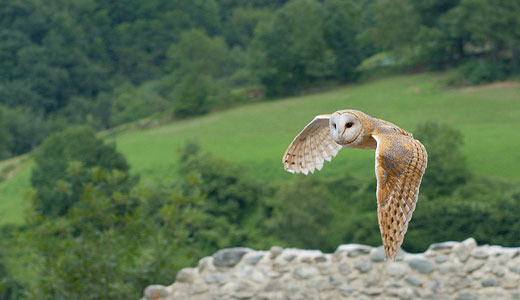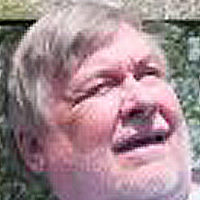
The ghostly sight of a barn owl flying silently and slowly at night is a rare thrill. There is a lane near my home where we often catch the almost white, slow and stately wing beats of a solitary barn owl in the car’s headlights as we drive home. It is always a stirring sight.
Last week we saw one of these amazing creatures quartering a meadow in broad daylight. It was hunting low over the ground and took no notice when we stopped to admire its flying ability.
Owls do hunt both day and night, particularly in winter when food is scarce, so this daytime hunt may well have been a reflection of the fact that our native barn owls are having a hard time at the moment. The many winter floods have drowned huge numbers of mice and voles that make up such an important part of the barn owl’s diet. Many birds failed to make up their breeding weight last spring and worse, some even starved to death. It seems that – with even greater floods this winter – their plight might be even worse.
Historically, the barn owl population declined significantly during the 20th century. This was mainly due to loss of habitat and lack of good nest sites, but also just as importantly by increased use of agricultural poisons like organo-chlorine pesticides such as DDT and by rat and mouse baits so popular in the 1950s and 1960s.
The trend did reverse as farmers took part in environmental schemes and provided rough grassland strips alongside fields as feeding areas. Nest box schemes are also providing nest sites where there are few suitable trees or old barns – and so the barn owl population started to grow again.
However, this winter has seen another crisis in barn owl numbers. Wildlife trusts and the RSPB have been counting owl numbers and the results have rung alarm bells.
The barn owl is a handsome bird. It grows to just over a foot (30-35cm) in height. It has buff or honey-coloured upper parts, flecked with grey and snow-white under parts, which make it easy to identify and gives it that ghostly appearance.
The bird has a distinctive white facial disc which is framed by a fine black heart-shaped border. Its vision and hearing are excellent enabling it to find prey in twilight and at night. Its feathers are especially soft and make no noise in flight – it is a silent hunter and can drop on prey undetected. Generally it feeds on small mammals – mostly short-tailed field voles and pygmy shrews, but also rats, wood mice, house mice, bank voles, and common shrews. It is these small animals’ numbers that have been so adversely affected by this winter’s flooding.
Last year after the floods came the snow. Similar weather is forecast this year. Snow allows the small mammals to hide from barn owls flying overhead so it seems likely that the owl population will suffer a real knock back again. When an owl does manage to catch its prey it swallows it whole and then a pellet of the indigestible material, mainly bones and fur, is regurgitated.
Naturalists break open the pellets to discover the exact diet of a specific barn owl by identifying the bones inside. This has helped establish the problems owls are having finding suitable prey.
The birds need to reach a good weight before they can mate and produce viable eggs. Barn owls lay between two and five, occasionally up to seven, eggs starting in late April to early May. The eggs are laid over several days, but as soon as the first egg is laid the female owl sits on the nest. She will sit for around 28 days and is fed by the male during all this period. Once hatched both parents feed the young birds. They are ready to leave the nest after about nine weeks.
The number of young birds that successfully fledge is dependent on the food supply. If there is a shortage of food the older, larger young will eat their smaller siblings. Survival of the fittest.
This article was reposted from Morning Star.
Photo: Wikipedia (CC)










